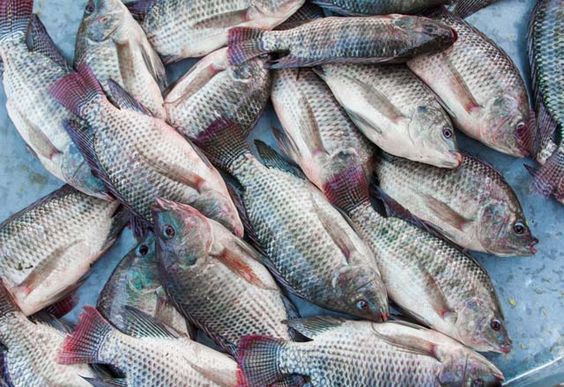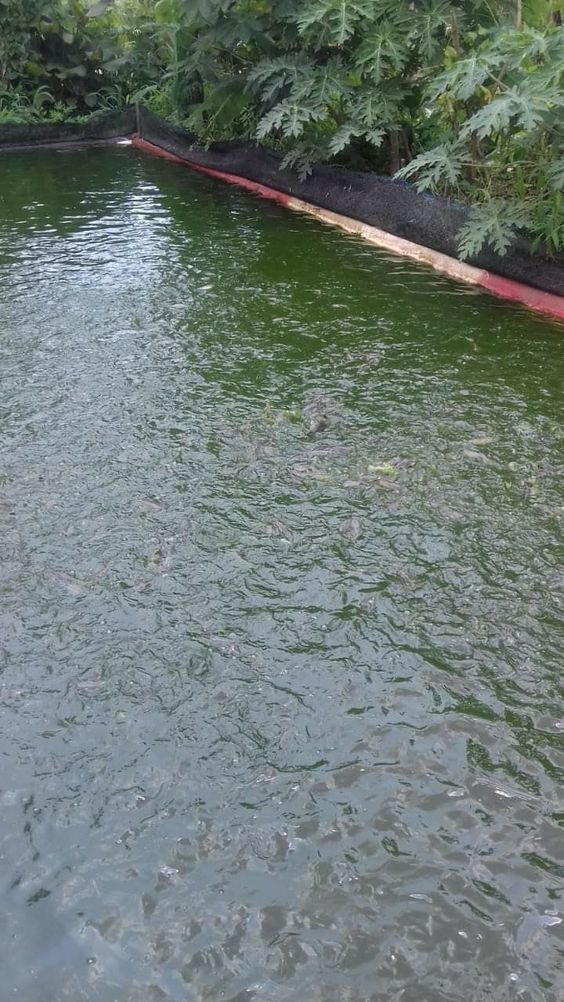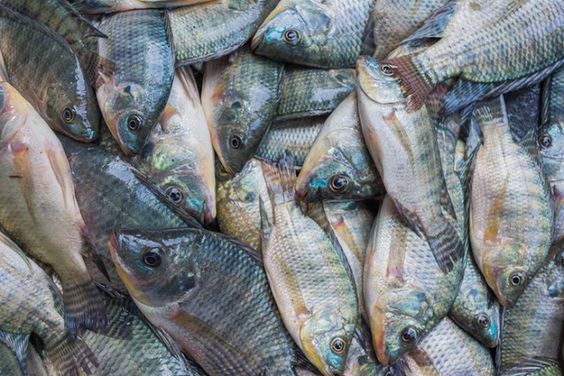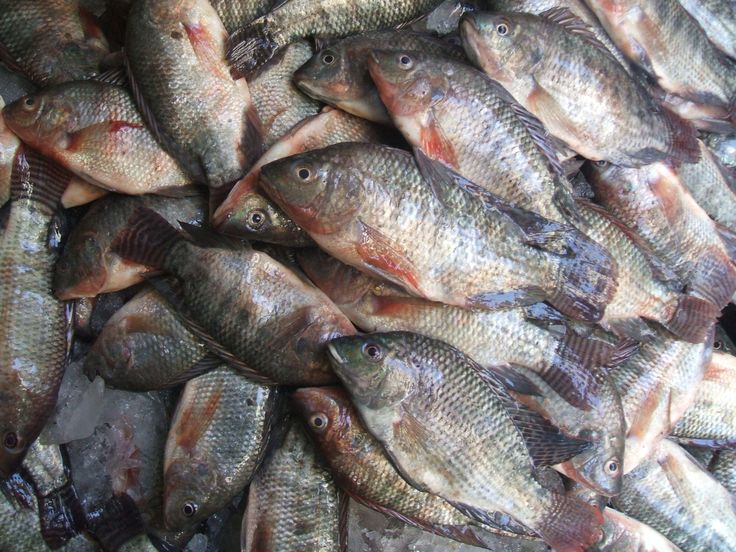Tilapia Fish Management 2024: Comprehensive Guide to Successful Aquaculture
Tilapia fish farming has become a popular and profitable business worldwide due to the fish’s adaptability, fast growth, and high demand in global markets. Proper tilapia fish management is crucial for maximizing production, maintaining fish health, and ensuring sustainability. Tilapia is a highly versatile species that thrives in various environments, making it an ideal candidate for aquaculture. However, efficient management requires a blend of knowledge in water quality, nutrition, breeding techniques, disease control, and environmental sustainability.
Contents
- 1 What is Tilapia Fish Management?
- 2 Benefits of Proper Tilapia Fish Management
- 3 Goals of Tilapia Fish Management
- 4 Key Components of Tilapia Fish Management
- 5 Innovative Ideas for Tilapia Fish Management
- 6 Topic Suggestions for Further Research in Tilapia Fish Management
- 7 Advantages of Tilapia Fish Farming
- 8 Challenges in Tilapia Fish Management
What is Tilapia Fish Management?
Tilapia fish management encompasses a set of practices and strategies designed to raise and care for tilapia in aquaculture systems efficiently. This includes monitoring and maintaining optimal water quality, developing appropriate feeding schedules, preventing diseases, and maximizing overall productivity. Farmers strive to create an environment where tilapia can grow, reproduce, and reach market size effectively, all while minimizing environmental impact and resource use.
In aquaculture, water quality is one of the most critical factors for successful tilapia management. Parameters such as pH levels, temperature, and dissolved oxygen must be carefully monitored and adjusted as needed. Proper feeding regimes are also essential, as they not only ensure healthy growth but also reduce waste and feed costs. Disease prevention is another key aspect of management, requiring biosecurity measures, regular health checks, and sometimes vaccination. Breeding management ensures a steady supply of high-quality fish, focusing on selective breeding to produce robust, fast-growing, disease-resistant tilapia.
Effective tilapia fish management helps farmers achieve better yields, lower mortality rates, and higher profitability. With optimal practices, tilapia can reach market size in six to nine months, ensuring quick production cycles and high economic returns. Moreover, by employing sustainable and environmentally friendly practices, farmers can reduce the ecological footprint of tilapia farming, meeting the rising demand for this fish in both local and global markets.
Why is Tilapia Popular in Aquaculture?
Tilapia is a preferred species for aquaculture due to its resilience, fast growth rate, and low production costs. It can thrive in a variety of water conditions, including freshwater and brackish water, making it suitable for various farming environments. Its ability to feed on plant-based diets lowers feed expenses, further enhancing its appeal for commercial farming. Additionally, tilapia’s mild taste and versatility in cooking make it popular among consumers worldwide, driving consistent market demand.
Benefits of Proper Tilapia Fish Management
Efficient tilapia fish management provides numerous benefits to both farmers and the broader ecosystem. Understanding these advantages can help farmers implement best practices in their operations.
Enhanced Growth and Productivity
One of the primary goals of tilapia management is to enhance growth rates and increase productivity. By maintaining optimal water conditions, managing feed intake, and preventing disease, fish farmers can ensure that tilapia grow faster and reach market size quickly.
Reduced Mortality Rates
Poor management often leads to higher mortality rates due to disease, poor water quality, or improper feeding. Efficient management practices, such as maintaining proper water parameters and monitoring fish health, reduce the likelihood of fish deaths, thus improving overall production.
Increased Profitability
With proper tilapia fish management, farmers can reduce input costs by optimizing feed usage, reducing mortality, and ensuring consistent growth. Higher productivity and lower costs lead to increased profitability.
Sustainability
Effective tilapia management also focuses on sustainability. Farmers can reduce their environmental footprint by managing water use, recycling waste, and ensuring that aquaculture practices do not harm local ecosystems.
Improved Fish Quality
Quality is essential in aquaculture. Well-managed tilapia farms produce fish with better texture, flavor, and nutritional value, leading to greater customer satisfaction and higher market demand.

Goals of Tilapia Fish Management
The primary goals of tilapia fish management vary depending on the type of production system, the market, and the environmental context. However, there are some universal objectives that all tilapia farmers should aim to achieve.
Maximizing Yield
One of the main goals in tilapia farming is to maximize the number of fish produced in a given period without compromising on health or environmental factors. Achieving high yields requires careful planning and management of all farm operations.
Reducing Production Costs
Effective tilapia management includes strategies for reducing operational costs. This could involve choosing cost-effective feed options, recycling water efficiently, or adopting technologies that reduce energy consumption.
Ensuring Sustainability
With growing environmental concerns, sustainability has become a critical goal for fish farmers. Sustainable tilapia management practices help maintain water quality, protect local ecosystems, and reduce the farm’s overall environmental impact.
Ensuring Fish Health
Health management is central to any tilapia farming operation. Disease outbreaks can devastate a fish population and severely impact profitability. Ensuring fish health through regular monitoring, proper nutrition, and water quality management is a key goal of tilapia management.
Meeting Market Demands
Different markets may require tilapia of specific sizes, quality standards, or even certifications (such as organic or eco-friendly labels). Tailoring tilapia management practices to meet these demands is essential for farmers who wish to tap into lucrative markets.
Key Components of Tilapia Fish Management
For a successful tilapia farming operation, there are several key components of management that must be considered.
Water Quality Management
Tilapia is tolerant of a wide range of water conditions, but optimal water quality is essential for maximizing growth and minimizing stress. Critical water parameters include:
- Temperature: Tilapia thrive in water temperatures between 25°C and 30°C. Lower temperatures can slow growth, while higher temperatures can stress the fish.
- pH Levels: Ideal pH levels for tilapia range from 6.5 to 9. Deviations from this range can affect fish health and growth rates.
- Dissolved Oxygen: Adequate levels of dissolved oxygen (DO) are crucial for tilapia’s metabolism. Aeration systems may be necessary in high-density systems to maintain sufficient oxygen levels.
- Ammonia and Nitrate Levels: Accumulation of ammonia and nitrates in water can be toxic to fish. Proper filtration and regular water changes are necessary to keep these compounds in check.
Feeding and Nutrition
Tilapia are omnivores, and their diet consists of both plant and animal matter. High-quality feed is essential for fast growth and efficient production. Some tips for effective feeding include:
- Protein Content: Tilapia require diets with 25-40% protein for optimal growth, depending on their stage of development.
- Feeding Frequency: Juvenile tilapia should be fed multiple times per day, while adult fish can be fed once or twice daily.
- Alternative Feeds: Incorporating locally available feed ingredients, such as soybean meal or algae, can reduce costs and increase sustainability.
Disease Prevention and Health Management
Disease outbreaks can cause significant losses in tilapia farming. Preventive measures, early detection, and timely treatment are key to maintaining fish health.
- Quarantine New Stock: Always quarantine new fish before introducing them to the main farm to prevent the spread of disease.
- Water Quality Monitoring: Regularly monitor water parameters to ensure the environment remains optimal for fish health.
- Vaccination: Depending on the prevalence of certain diseases in your region, vaccinations may be necessary to protect fish populations.
- Biosecurity: Establishing biosecurity protocols, such as controlling access to the farm and disinfecting equipment, helps reduce the risk of disease transmission.
Breeding and Stocking Management
Breeding plays a crucial role in tilapia management. Selective breeding can help farmers produce fish with desirable traits, such as fast growth rates, disease resistance, or improved feed conversion efficiency.
- Stocking Density: Overcrowding can lead to poor growth, increased disease risk, and competition for food. Stocking densities should be carefully managed to optimize growth.
- Gender Management: Male tilapia tend to grow faster than females. Many farms use mono-sex populations to maximize growth rates, often through sex-reversal techniques.

Innovative Ideas for Tilapia Fish Management
Tilapia farming is continually evolving, with new technologies and innovations improving management practices. Here are some innovative ideas to enhance tilapia farming operations:
Recirculating Aquaculture Systems (RAS)
Recirculating Aquaculture Systems (RAS) allow farmers to recycle water, reducing water consumption and creating a controlled environment for tilapia farming. RAS technology helps to maintain optimal water quality, reduce disease outbreaks, and enhance sustainability.
Aquaponics
Tilapia Fish Management,Aquaponics is a symbiotic farming method that combines tilapia farming with hydroponic plant cultivation. The fish waste provides nutrients for the plants, while the plants help filter the water for the fish. This system is highly sustainable and efficient, allowing farmers to produce both fish and vegetables in a closed-loop system.
Integrated Multi-Trophic Aquaculture (IMTA)
IMTA is an innovative system that integrates multiple species at different trophic levels in the same farm. For example, tilapia can be farmed alongside shellfish, algae, or shrimp, creating a balanced ecosystem that mimics natural environments. This system enhances sustainability and maximizes resource use.
Automatic Feeding Systems
Tilapia Fish Management,Automated feeding systems help reduce labor costs and ensure that fish are fed consistently. These systems can be programmed to dispense specific amounts of feed at set intervals, optimizing growth rates and feed conversion efficiency.
Topic Suggestions for Further Research in Tilapia Fish Management
As tilapia farming grows in scale and importance, there are numerous areas where further research can enhance both productivity and sustainability. Below are key research topics that could significantly improve the practice of tilapia fish management:
The Impact of Climate Change on Tilapia Farming: Tilapia Fish Management,Investigating how global warming and shifting weather patterns affect tilapia farming is essential for future-proofing aquaculture. Rising water temperatures and changing rainfall patterns could influence water quality, fish growth, reproduction cycles, and disease susceptibility. Research in this area could help develop adaptive strategies, such as breeding heat-resistant strains or designing climate-resilient farming systems.
Sustainable Feed Alternatives: Tilapia Fish Management,One of the major costs in tilapia farming is feed, especially commercial fishmeal, which is often unsustainable and expensive. Research into alternative, locally available, and eco-friendly feed options—such as plant-based feeds, insect proteins, or agricultural by-products—could reduce costs and environmental impact. Innovations in feed formulation and sustainable feeding practices would contribute to more environmentally friendly tilapia farming.
Genetic Improvement in Tilapia: Tilapia Fish Management,Selective breeding and genetic engineering hold great promise in creating superior tilapia strains. Research could focus on developing tilapia that grow faster, are more disease-resistant, and can thrive in varying environmental conditions. Genetic improvements could lead to higher yields, lower mortality rates, and increased efficiency, making tilapia farming more profitable and sustainable.
Ecosystem-based Tilapia Farming: Tilapia Fish Management,Integrating tilapia farming with the surrounding ecosystem offers a more holistic approach to aquaculture. By aligning tilapia production with local environmental systems—such as wetland conservation or mangrove restoration—farmers can boost biodiversity, enhance ecosystem services, and create more sustainable farming practices. Research on how tilapia farming can coexist with and benefit local ecosystems could revolutionize the industry’s sustainability.
Automation in Aquaculture: Tilapia Fish Management,The use of advanced technologies like artificial intelligence, automated feeding systems, and drones for water quality monitoring could significantly improve the efficiency of tilapia farming. Research into these technologies would explore their potential for reducing labor, improving real-time monitoring, and optimizing farm operations, making tilapia management smarter and more efficient.
Advantages of Tilapia Fish Farming
Tilapia Fish Management offers several advantages that make it a profitable and sustainable venture. These benefits include:
High Demand
Tilapia Fish Management is one of the most consumed fish worldwide, particularly in the United States, Asia, and Europe. Its mild flavor and versatility in cooking make it popular among consumers, ensuring a consistent market demand.
Low Input Requirements
Tilapia Fish Management,Compared to other fish species, tilapia farming requires relatively low inputs. Tilapia can thrive on plant-based diets, and their adaptability to different water conditions reduces the need for costly water treatment or high-quality feed.
Quick Growth Cycle
Tilapia Fish Management reach market size in a relatively short period, usually within six to nine months. This fast growth cycle allows farmers to generate revenue quickly and turn over multiple production cycles per year.
Environmental Sustainability
Tilapia Fish Management With the right management practices, tilapia farming can be highly sustainable. The fish can be raised using low-cost feeds, integrated farming systems, and water-efficient technologies, reducing the overall environmental footprint.
Versatility in Farming Systems
Tilapia Fish Management can be farmed in a wide range of systems, including ponds, tanks, cages, and recirculating systems. This versatility allows farmers to choose the system that best fits their resources, climate, and available space.

Challenges in Tilapia Fish Management
Tilapia Fish Management,Despite the many advantages of tilapia farming, it also presents several challenges that farmers must navigate to ensure success. Addressing these challenges is critical for maintaining productivity, profitability, and sustainability in the long term.
Disease Outbreaks
Disease is one of the most significant threats to tilapia aquaculture. Common diseases in tilapia farming include:
- Streptococcosis: A bacterial infection causing high mortality, characterized by lethargy, loss of appetite, and erratic swimming.
- Columnaris Disease: A bacterial infection affecting the skin, gills, and fins, often associated with poor water quality.
- Parasitic Infections: External parasites, such as monogenean flukes, can infest the skin and gills of tilapia, leading to respiratory distress and secondary infections.
To mitigate the risk of disease, farmers must implement strong biosecurity measures, regular health monitoring, and preventive treatments such as vaccination or probiotic use. Disease outbreaks can spread rapidly in high-density farming systems, making early detection and treatment critical.
Water Quality Management in Intensive Systems
In high-density tilapia farms, managing water quality becomes increasingly complex. Fish waste, uneaten feed, and other organic materials can quickly degrade water quality by increasing ammonia, nitrite, and nitrate levels, which are toxic to fish. Aeration, filtration, and frequent water changes are necessary to maintain a healthy environment. Recirculating Aquaculture Systems (RAS) and biofiltration systems are often used to address these challenges, but they can require significant upfront investment.
Feed Costs
Tilapia Fish Management,Although tilapia are relatively low-cost to feed compared to other aquaculture species, the cost of commercial feed can still represent 40-60% of total production costs. Sustainable and cost-effective feed alternatives, such as locally sourced plant materials, algae, or insect protein, are increasingly being explored to reduce reliance on fishmeal-based feeds. Innovations in feed technology can help farmers optimize feed conversion ratios (FCR), reducing waste and improving growth rates.
Environmental Concerns
Tilapia Fish Management, particularly when done intensively or at large scales, can have negative environmental impacts if not properly managed. These include:
- Water Pollution: Poor waste management can lead to nutrient runoff into nearby water bodies, causing eutrophication and harm to local ecosystems.
- Overuse of Water Resources: In traditional pond systems, excessive water usage can strain local water supplies, especially in arid regions.
- Invasive Species Risks: If farmed tilapia escape into the wild, they can become invasive and disrupt native ecosystems by outcompeting local species.
Sustainable practices, such as integrated multi-trophic aquaculture (IMTA), water recycling, and improved waste management, are essential for mitigating these environmental risks.
Regulatory and Market Challenges
Tilapia Fish Management,Farmers must also navigate regulatory hurdles and market fluctuations. Many countries impose strict regulations on water use, pollution, and the introduction of non-native species. Complying with these regulations can increase costs and complexity for farmers. Additionally, fluctuating market prices and competition from other fish species or countries can affect profitability. Farmers must stay informed about market trends and adapt their production accordingly.
Tilapia fish management is a multifaceted process that requires knowledge of water quality, feeding, disease control, and breeding techniques. By following the principles of effective management, farmers can optimize their operations for better productivity, profitability, and sustainability. Whether you’re a new farmer exploring tilapia aquaculture or an experienced producer seeking to improve your practices, this comprehensive guide provides the tools and insights necessary for success.






